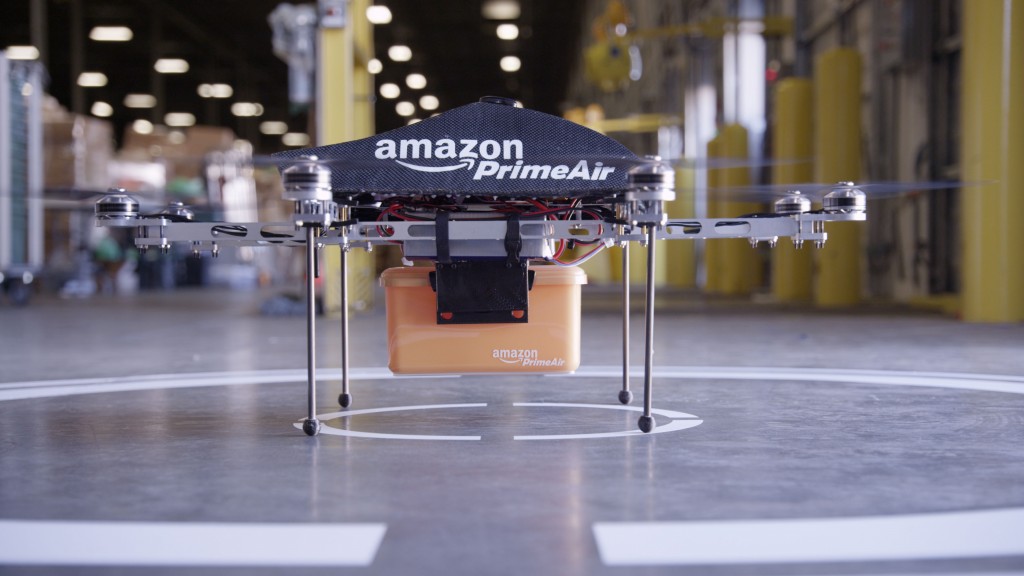In the latest development in Amazon’s plans to deliver packages by unmanned drones, it has announced a comprehensive proposal for turning its lofty dreams into reality. Amazon Prime Air unveiled its plan on Tuesday at a NASA convention in California, and central to its proposal is the creation of a 200 foot slice of air, located between 200 feet and 400 feet from the ground, that would only be used by drones equipped with the technology that will allow them to fly safely and autonomously. A further 100 feet of airspace, between 400 feet and 500 feet, would be a no-fly zone. If Amazon’s proposed plans are accepted by the Federal Aviation Administration (“FAA”), the American public could see tens of thousands of drones whizzing by in the air within the next several years.
Specifically, Amazon prioritizes safety and lays out the following proposed guidelines that drones must follow if they are to be allowed to fly in the set aside flight zone: 1) the drones must have GPS tracking allowing them to relay their exact location and relative to other drones flying nearby; 2) an onboard Internet connection allowing the drones to maintain real-time GPS data and their location relative to other drones; 3) an online flight plan allowing them to predict and relay their flight path; 4) communications equipment allowing them to communicate with other drones in the air zone so as to avoid collisions; and 5) sensor-based equipment allowing the drones to bypass all obstacles including other drones, birds, buildings and cables.
Before Amazon’s ambitious plan is realized, it has some hurdles to overcome. In addition to convincing the FAA to move forward with the discussion, it also has to appease amateur drone flyers across the country.
Amazon’s proposals are much more ambitious than what the FAA proposed in its recent attempt to draft commercial drone rules earlier this year. In that draft legislation, the FAA proposed that commercial drones only fly during the day and within the plain view of a licensed operator from the ground. These two restrictions alone make Amazon’s Prime Air delivery system virtually impossible.
As of now, it is unclear whether the FAA will allow for drone delivery, a move that Amazon Prime Air vice president Gur Kimchi calls behind the times. Kimchi stated that current drone operators and companies are not cooperating with each other to create a safe environment. Kimchi stated that Amazon’s proposals “can only be safe if everyone else is safe.” He further stated that, “[t]he key here is to simplify the airspace, not complicate.” Parimal Kopardekar, head of NASA’s drone management project stated that he hopes the United States can adopt a universal drone traffic system before a tragedy occurs. “It’s crucial,” he stated. Without a uniform system, “everyone flies anywhere they want to and they end up going into no-fly zones and into firefighting efforts and near airports.”
Time will tell, probably in the near future, whether Amazon Prime Air will get airborne and start delivering packages to doorsteps around the country.
Stay Connected